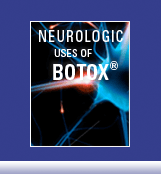![]()
 |
|
Office Based Migraine Rescue Procedures
Dr. Loftus is the only headache practice that offers office procedures and IV rescue therapy in his office. The rescue therapies are only offered to existing patients. They allow an existing patient to call the office any morning and receive rescue therapy the same day at our office. This will make the need to go to an ER much less likely. In addition, this allows for therapeutic interventions between normally scheduled office visits should the patient find themselves not doing as well as expected. All of these treatments are highly cost effective. Coverage varies by insurance and will be discussed for each of the options given.
Sphenopalatine Ganglion (SPG) block
According to an article about Sphenopalatine Ganglion Block published in 1993, the earliest use of this technique goes back to 1908. Until relatively recently, it was most commonly performed with a long needle under radiographic guidance. More recently, there has been the development of multiple devices to allow for routine placement of SPG block in the physicians office. The Allevio and Sphenocath devices are almost identical. The Tx360 device is very different. Although the Tx360 device is much easier to perform, it appears to Dr. Loftus that the Allevio device is more effective - at least for single use. The Allevio device is used for both acute migraine treatment (rescue) and for preventative treatment. With the patient lying back on a massage tablet with the head tilted back, the device is placed in the nose. Lidocaine is injected to achieve the block. The patient's eyes generally water and the blood flow to the cheeks generally increase but the mechanism of these changes and its importance is not clear. It appears that acute headaches get better about 80-90% of the time. The most common side effect - outside of local irritation and discomfort of the procedure itself, is acute nausea and vomiting for 4-8 hours starting about one hour after the procedure. This seems to occur 1-2% of the time and scopolamine patch appears to Dr. Loftus to be the most effective treatment option. The medication used for this procedure is lidocaine so it is commonly used before pregnancy, during pregnancy, and while breastfeeding. The cost of this procedure is $300.
Occipital Nerve Blocks (ONB)
Occipital nerve blocks have been used to "break" acute migraines that have persisted for decades. It is commonly given as a combination of a steroid with an anesthetic agent. Its effectiveness does not appear to be as robust as either the SPG block or IV therapies with DHE. It is less expensive than the DHE. When prevention is also needed, Dr. Loftus will commonly combine an occipital nerve block with a trigeminal nerve block - referred to in our office as a pericranical nerve block. It is an excellent preventative when given in a pattern made popular by Dr. Kaniecki. The acute numbness from the blocks give many patients excellent initial relief. Prevention usually kicks in within a day or two. Dr. Loftus does not generally use it for acute treatment for the most severe headaches. These blocks can also be used during breastfeeding.
IV Rescue
IV treatments are sometimes used for both acute therapy and for prevention. For acute rescue, treatment usually includes dihydroergotamine (DHE). IV treatment with this medication generally increases nausea so either ondansetron or metoclopramide is given prior to the dihydroergotamine. IV magnesium is commonly given as it seems to extend the benefit of the therapy. Ketorolac is also used at times for acute migraine therapy. Many patients coming for rescue have previously tried this treatment at home so it is less likely to be used. Rescue with IV DHE, IV Magnesium and an IV anti-nausea agent (either metoclopramide or ondansetron) is approximately $300.
After ketorolac and DHE, the next line treatment of IV rescue in my practice is typically IV haloperidol. Haloperidol has several potential side effects. First, it can cause prolongation of the QT, so a baseline EKG is needed if one has not been done previously. Dystonic reaction (muscle spasm) can occur and usually occurs in the mid line - eyes, neck, tongue. Because dystonic reaction is more common the younger you are, I typically pre-medicate all patients under age 50 with diphenhydramine All patients must have oral diphenhydramine available at home in case a dystonic reaction occurs. Akathisia is not common but when it occurs is treated by lorazepam with diphenhydramine. These side effects require repeat treatments in younger patients but usually just last the day of the infusion plus a day or two maximum. Rescue with IV Haldol (including IV diphenhydramine pre-treatment and and a EKG) is approximately $240.
If dehydration is a concern due to vomiting and nausea from a prolonged migraine then adding 1 liter of IV hydration to either of the above IV treatments is considered. This is an additional $64 in addition to the service listed above.
Another treatment option is IV Valproic acid. This one hour infusion is more commonly used for cluster therapy than migraine therapy.
Prices are subject to increase or decrease without notice as the cost of some medications fluctuate. All prices are current as of 2/23/2020.



